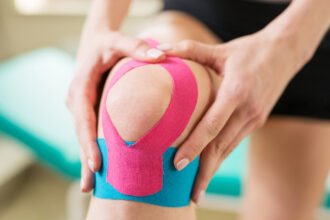Rotator Cuff Syndrome is a common injury that can really happen to anyone. If you think about the basic mechanics of your shoulder, you should not be terribly surprised that the ball and socket joint can slip under the wrong type of pressure. If you are suffering from Rotator Cuff Syndrome, you might be asking yourself what you can do to help get yourself back on track. We asked the team at Fifth Avenue Physiotherapy for some exercises that can help reduce the symptoms of Rotator Cuff Syndrome. This is what they told us.
What is Rotator Cuff Syndrome?
Rotator Cuff Syndrome (RCS) includes many different injuries or conditions that affect the rotator cuff. They can range from anything from bursitis and tendonitis, to rotator cuff tears. Regardless, RCS can be both painful and debilitating. If you suffer from RCS, there are exercises that you can do to strengthen the rotator cuff and help prevent further injury. Here are some:
- Arm Reach: While lying on your back, extend your arms and legs, stretching them in opposing directions. Then, reach one arm toward the ceiling. Lift the arm until your shoulder blade lifts off of the floor. Hold it for 5 seconds before releasing and switching arms.
- Doorway Stretch: Standing in the doorway, hold onto both sides of the frame at your shoulder height. Lean forward slowly while keeping your back straight. There should be a light stretching in your shoulders. You can lean further forward for a deeper stretch, but if you have RCS, you will not want to do a deep stretch.
- Pendulum: While standing, lean forward and let one of your arms hang loosely. You can hold onto something with the other arm for balance. Then swing the loose arm side to side and front to back. Finally, let your arm swing in a circle. This exercise is using gravity to help work out the tension in your shoulder. Repeat the move on your other arm.
- Lawnmower: While standing, put one foot in front of the other, keeping your feet about shoulder-width apart. Keep a light weight in the hand on the same side as your back leg. Put your front hand on your front knee for support, bending the knee slightly. Just like the motion of pull starting a lawnmower, pull your elbow with the weight back up across your body. Repeat the move about 10 times before switching sides and repeating it.
- External Rotation: While lying on one side of your body, hold a light weight in your free arm. Bend the elbow to 90 degrees, leaving the upper part of your arm against your body and allowing the weight to hang toward the floor. While keeping your elbow in place, rotate your shoulder, pulling the weight up toward the ceiling. Then, lower the weight back to the starting position. If it is too much for your shoulder, place a rolled up towel in your armpit.
- Crossover Stretch: Either from standing or sitting, lift one arm straight up so that it is perpendicular to the floor. Extend it forward without locking out your elbow. Take the other arm and wrap it around the extended arm around the elbow. Gently pull your straight arm across your body. Hold for 5 to 10 seconds before slowly releasing the arm and repeating the move on the other side.
Other Things to Know
It is important to check in with a physician and a physiotherapist if you are experiencing a shoulder injury before proceeding with these types of exercises. You do not want to exacerbate a condition that you might be suffering from and prolong the ailment. It is also important to get a proper diagnosis to know what you are dealing with. While RCS falls under several conditions, you will need to be sure that you are dealing with RCS and not another condition for your own safety.









